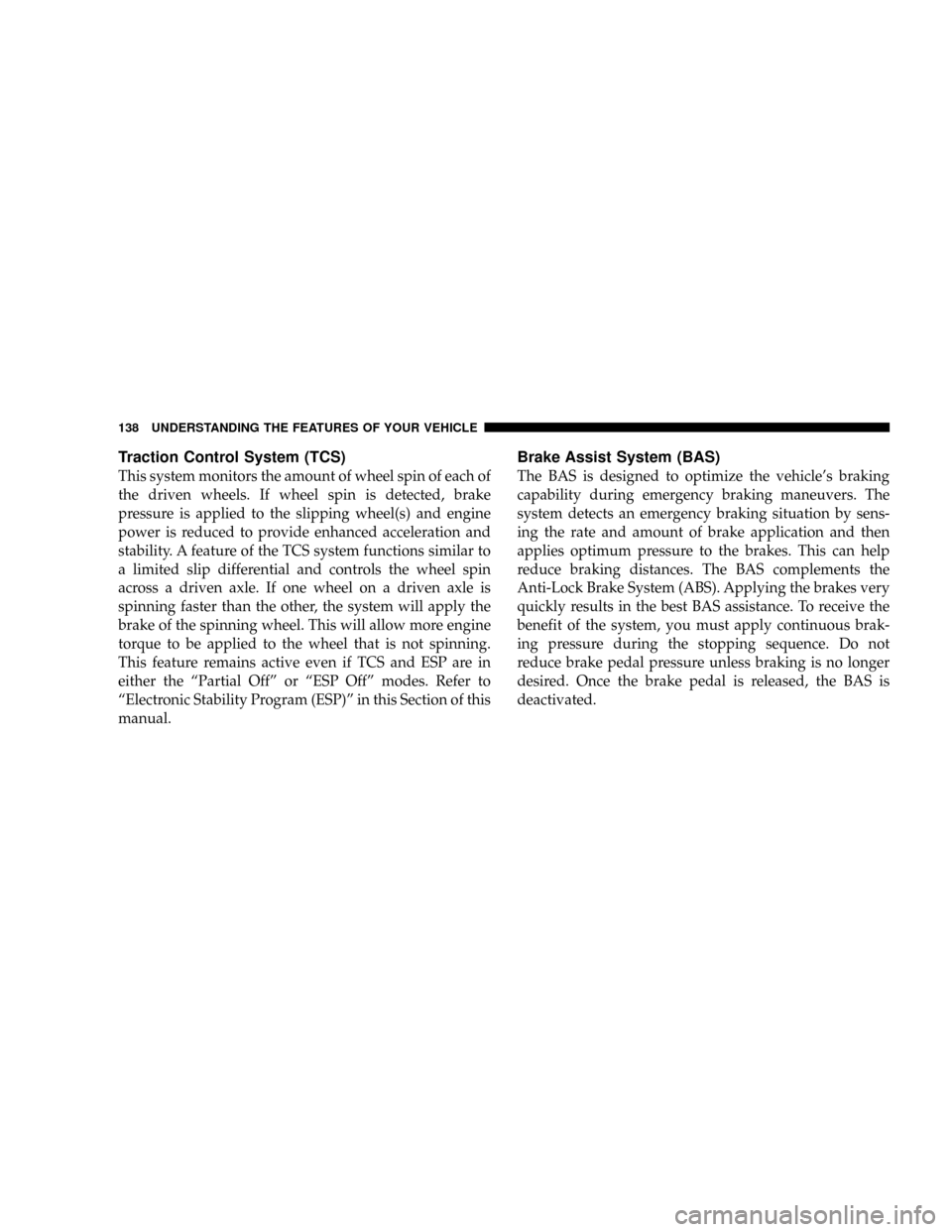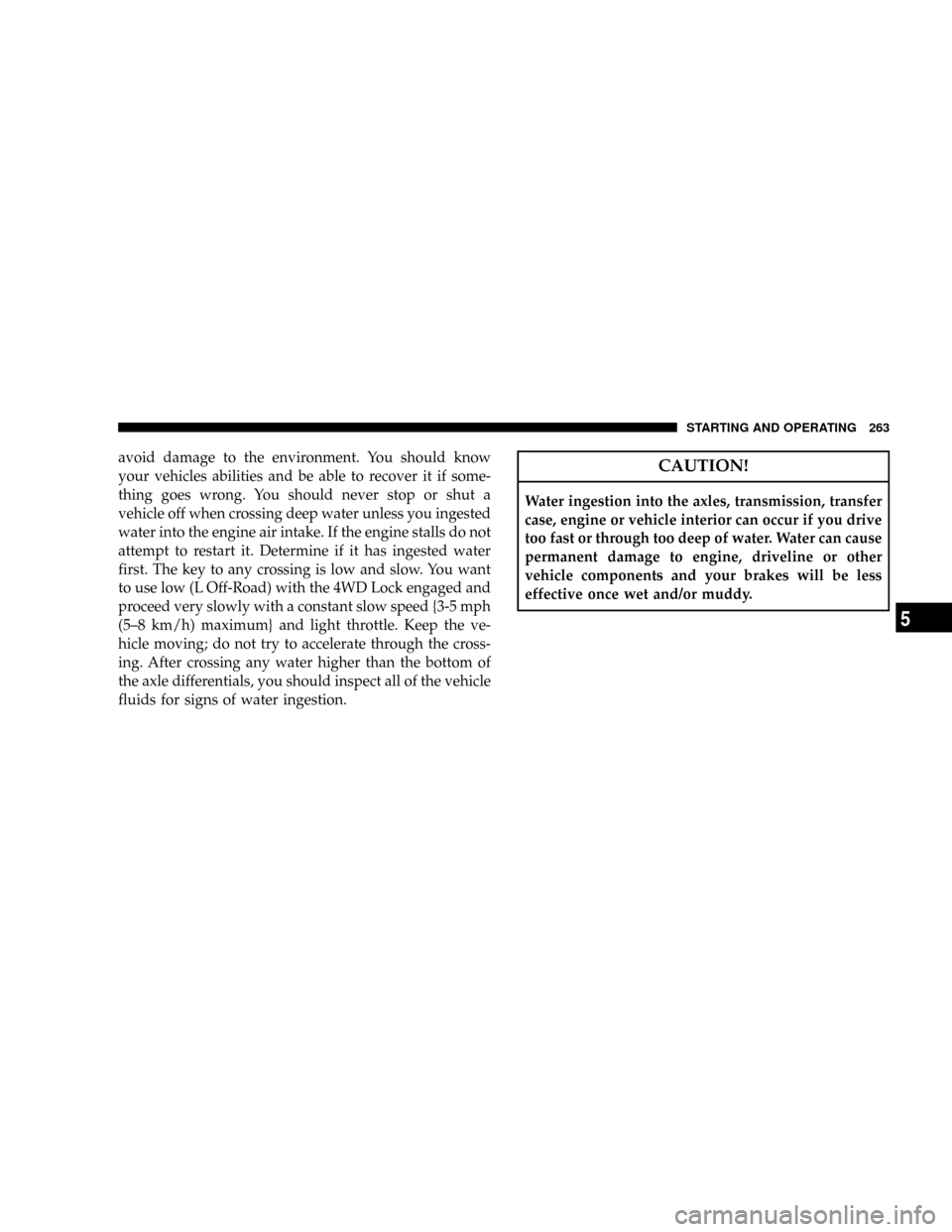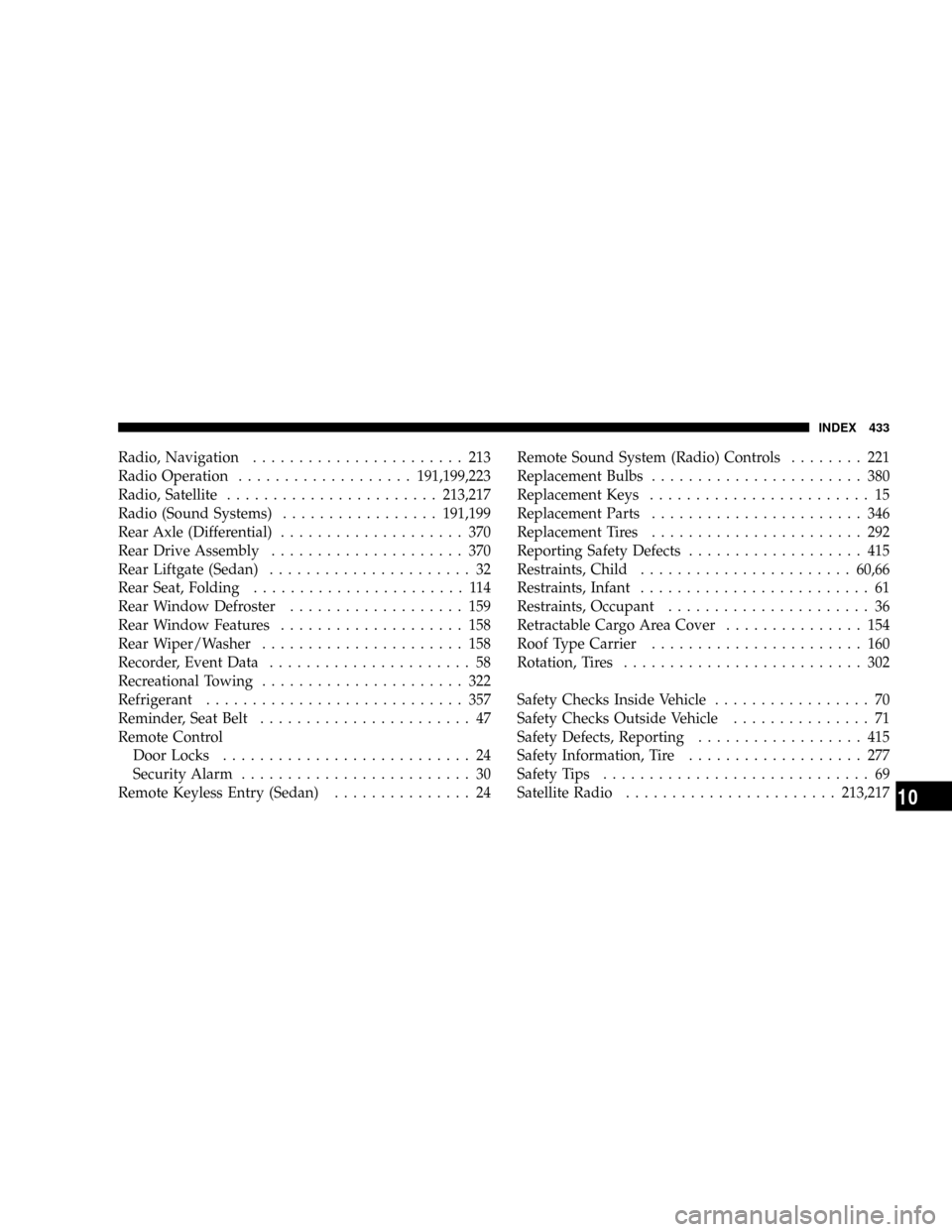differential JEEP PATRIOT 2007 1.G Owners Manual
[x] Cancel search | Manufacturer: JEEP, Model Year: 2007, Model line: PATRIOT, Model: JEEP PATRIOT 2007 1.GPages: 440, PDF Size: 7.26 MB
Page 139 of 440

Traction Control System (TCS)
This system monitors the amount of wheel spin of each of
the driven wheels. If wheel spin is detected, brake
pressure is applied to the slipping wheel(s) and engine
power is reduced to provide enhanced acceleration and
stability. A feature of the TCS system functions similar to
a limited slip differential and controls the wheel spin
across a driven axle. If one wheel on a driven axle is
spinning faster than the other, the system will apply the
brake of the spinning wheel. This will allow more engine
torque to be applied to the wheel that is not spinning.
This feature remains active even if TCS and ESP are in
either the ªPartial Offº or ªESP Offº modes. Refer to
ªElectronic Stability Program (ESP)º in this Section of this
manual.
Brake Assist System (BAS)
The BAS is designed to optimize the vehicle's braking
capability during emergency braking maneuvers. The
system detects an emergency braking situation by sens-
ing the rate and amount of brake application and then
applies optimum pressure to the brakes. This can help
reduce braking distances. The BAS complements the
Anti-Lock Brake System (ABS). Applying the brakes very
quickly results in the best BAS assistance. To receive the
benefit of the system, you must apply continuous brak-
ing pressure during the stopping sequence. Do not
reduce brake pedal pressure unless braking is no longer
desired. Once the brake pedal is released, the BAS is
deactivated.
138 UNDERSTANDING THE FEATURES OF YOUR VEHICLE
Page 264 of 440

avoid damage to the environment. You should know
your vehicles abilities and be able to recover it if some-
thing goes wrong. You should never stop or shut a
vehicle off when crossing deep water unless you ingested
water into the engine air intake. If the engine stalls do not
attempt to restart it. Determine if it has ingested water
first. The key to any crossing is low and slow. You want
to use low (L Off-Road) with the 4WD Lock engaged and
proceed very slowly with a constant slow speed {3-5 mph
(5±8 km/h) maximum} and light throttle. Keep the ve-
hicle moving; do not try to accelerate through the cross-
ing. After crossing any water higher than the bottom of
the axle differentials, you should inspect all of the vehicle
fluids for signs of water ingestion.CAUTION!
Water ingestion into the axles, transmission, transfer
case, engine or vehicle interior can occur if you drive
too fast or through too deep of water. Water can cause
permanent damage to engine, driveline or other
vehicle components and your brakes will be less
effective once wet and/or muddy.
STARTING AND OPERATING 263
5
Page 434 of 440

Radio, Navigation....................... 213
Radio Operation...................191,199,223
Radio, Satellite.......................213,217
Radio (Sound Systems).................191,199
Rear Axle (Differential).................... 370
Rear Drive Assembly..................... 370
Rear Liftgate (Sedan)...................... 32
Rear Seat, Folding....................... 114
Rear Window Defroster................... 159
Rear Window Features.................... 158
Rear Wiper/Washer...................... 158
Recorder, Event Data...................... 58
Recreational Towing...................... 322
Refrigerant............................ 357
Reminder, Seat Belt....................... 47
Remote Control
Door Locks........................... 24
Security Alarm......................... 30
Remote Keyless Entry (Sedan)............... 24Remote Sound System (Radio) Controls........ 221
Replacement Bulbs....................... 380
Replacement Keys........................ 15
Replacement Parts....................... 346
Replacement Tires....................... 292
Reporting Safety Defects................... 415
Restraints, Child.......................60,66
Restraints, Infant......................... 61
Restraints, Occupant...................... 36
Retractable Cargo Area Cover............... 154
Roof Type Carrier....................... 160
Rotation, Tires.......................... 302
Safety Checks Inside Vehicle................. 70
Safety Checks Outside Vehicle............... 71
Safety Defects, Reporting.................. 415
Safety Information, Tire................... 277
Safety Tips............................. 69
Satellite Radio.......................213,217
INDEX 433
10